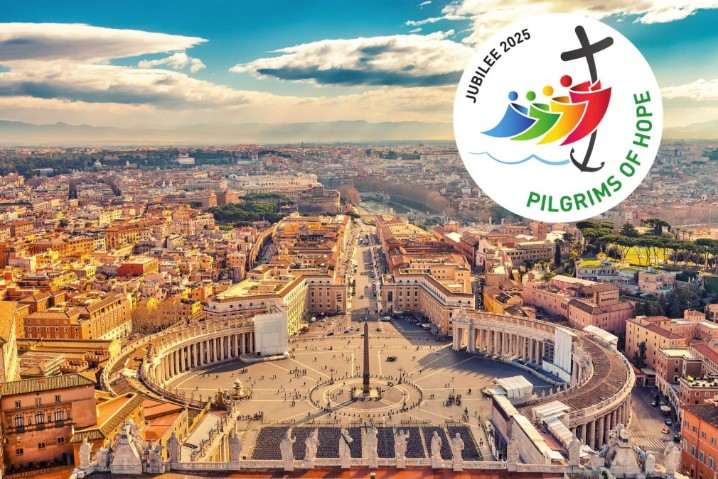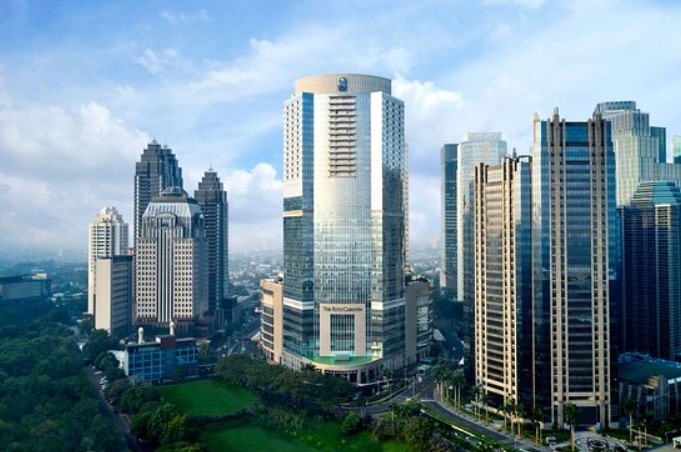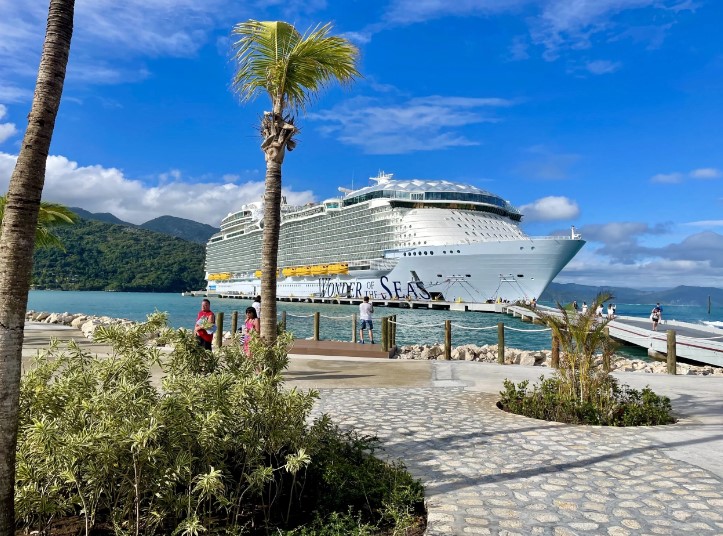Waiting on a train platform in Hassleholm, Sweden, Manni Elfborg was both poetic and practical in explaining why his family was taking a 24-hour rail trip, rather than two short-hop flights, to their vacation destination in Slovenia.
Elfborg, 61, talked about the experience of the train — watching landscapes pass by outside the windows. He said he appreciated disembarking in city centers, rather than at airports on the outskirts.
But his son, 27-year-old Theodor, acknowledged they were an exception among their family friends: “We’re usually the only ones who say: ‘We took the train.’ ”
For nearly two decades, cheap, short flights defined European travel. With the rise of budget airlines, people with limited discretionary funds could consider trips that were previously out of reach. And people took advantage of that access, exploring other countries and cultures, embracing the European Union ideal of free movement across borders.
But all those flights amounted to a big carbon footprint. While cheap for travelers, they incurred a hefty environmental cost — undermining Europe’s pledges to cut harmful emissions and become carbon-neutral.
Now, climate-conscious European governments and groups are going to varying lengths to break people of their flight habits. Some are building on the “flight shame” movement popularized by Swedish teen activist Greta Thunberg. Germany and Spain have been experimenting with ways to make train travel more appealing, offering tickets at a nominal price. Meanwhile, France, the Netherlands and Austria are trying to limit people’s options by limiting flights.
We set out to discover how well those efforts are working: whether they are successfully getting people to skip carbon-heavy flights in favor of more environmentally friendly trains. We embarked on a multi-leg train trip that began in Sweden and took us through Denmark, Germany, the Netherlands and Belgium before ending in France.
Along the journey, we found that the government efforts have contributed to something of a rail renaissance. Trains at the end of summer in Europe were packed. “I had a seat available on this train for the last time in May,” said Linus Hall, a conductor on the sold-out Snalltaget sleeper train between Stockholm and Berlin.
Flights are also nearly back to their pre-pandemic levels, however. And for those who do opt for the train, European rail services may not be up to their expectations. Our trip involved multiple delays, complicated connections, long bathroom lines, stolen luggage and at one point a rail strike that forced us off the train and onto a bus.

Trains similar to the ones we took emit
about an eighth of the carbon dioxide
that planes emit on the same trip.

Trains similar to the ones we took emit
about an eighth of the carbon dioxide that
planes emit on the same trip.

Trains similar to the ones we took emit
about an eighth of the carbon dioxide that
planes emit on the same trip.
We joined the night train in the early evening at the railway junction of Hassleholm, about 45 minutes north of the Swedish city of Malmo.
The prevailing standard of train travel in Europe is a far cry from the sleek Chunnel trains that zip beneath the seabed of the English Channel and can reach speeds of 186 miles per hour.
More typical is the boxy Snalltaget. The night train’s operators boast that it runs on renewable energy. But it also tops out at 124 miles an hour and features refurbished but still bare-bones cars built in the 1970s.
All the seats on the train require reservations. Few remained unoccupied when we boarded. Many passengers had already been on the train for as long as four hours, after boarding in the Swedish capital or one of the stops in between. Pillows and shoes were strewn about the floor. Some people were already asleep, their heads leaning against seat covers that read in Swedish: “Say hello to your fellow travelers!”
When Snalltaget began service from Sweden to Berlin in 2012, it seemed doomed to fail. Budget airlines were expanding their fleets and selling seats on their 1-hour 40-minute flights from Stockholm to Berlin at dumping prices. Snalltaget struggled to find enough travelers for even two small carriages on its 15-hour, not-much-cheaper trip.
But a new era of rail travel began in the summer of 2019, when Thunberg, then 16, helped popularize flygskam, or “flight shame.” In Sweden that year, train travel increased one-third over the previous summer, while air travel dropped about 4 percent at the country’s major airports.
Paul Chiambaretto, who has studied the flight shame movement, cautioned that shame has its limits. “People who often travel by train are also the ones who often travel by plane,” he said, adding that few are ashamed.
A common defense: Why be ashamed when trains are often more expensive than equivalent flights, when trains sell out far in advance and when booking can be dizzyingly complicated, especially on cross-border trips involving multiple European rail operators.
“The number of apps or website tabs you need to have open to even find out how to make some of these trips,” said Berlin-based blogger and train enthusiast Jon Worth, “means it’s basically out of reach of anyone who’s not uber keen.”
For many, it comes down to which mode of transportation is less of a hassle. Ten major Swedish airports saw about a quarter fewer travelers this summer than in 2019, before the pandemic. But along with environmental concerns, that drop can be linked to strikes, widespread flight cancellations and rising ticket prices. Rail passenger numbers, meanwhile, were down 5 percent in the second quarter of this year, compared with the same period in 2019.
Nobody taking the Snalltaget sleeper train cited social pressure as a reason they booked their ticket, though some talked about the environment.
Ellen Haaslahti, 23, said she was studying environmental sciences and has been alarmed by the “brutal” predictions of scientists she has spoken with.
“Every day, I’m hearing how bad things are,” she said. Taking the train was “a way to express how I can change my lifestyle according to what I believe.”
In the dining car, where the lights were dimmed for the evening, Tomas Hedblom, 29, said he preferred the train over planes: “It’s more comfortable. You can walk around!”
But when he did get up to walk, his girlfriend, Nina Tikkanen, 25, admitted she wouldn’t have minded a flight.
The real reason they didn’t fly? “I think he’s a bit afraid,” she said, and laughed.
At Malmo Central Station, the night train stopped for a scheduled hour, so the dining car could come off and sleeper coaches could be added. Then the train continued on its route — crossing the strait that connects the Baltic and North seas via the Oresund Bridge, passing the blinking runway lights of Copenhagen airport a short time later.
The conversations onboard became quieter. Travelers closed their curtains. Many were asleep by the time they crossed the Danish-German border.
The cheapest train tickets just get you a seat. For more money, passengers can reserve a spot in a small cabin with three berths stacked on each side of a narrow aisle. Don’t want to be inches above or below strangers? You need to reserve an entire cabin.
The train cars have been retrofitted, but they still have a retro feel. “A brand new passenger coach is quite expensive — for us, that was not an alternative,” said Marco Andersson, a senior executive at Snalltaget.
With the revival of train travel, European railway companies have competed to secure secondhand coaches.
“Compared to other markets, railway passenger coaches have a long lifetime,” Andersson said, noting that many of the Snalltaget cars were produced in Germany in the 1970s.
The train arrived in Berlin 10 minutes ahead of schedule the next morning, nearly 17 hours after leaving Stockholm. But because of construction, the route terminated at a commuter station. Passengers were left to find their own way to Berlin Central.

Trains similar to the ones we took emit
about a quarter of the carbon dioxide
that planes emit on the same trip.

Trains similar to the ones we took emit
about a quarter of the carbon dioxide
that planes emit on the same trip.

Trains similar to the ones we took emit
about a quarter of the carbon dioxide
that planes emit on the same trip.
As travelers streamed onto the platform at Berlin’s main station, they were met by environmental activists who encouraged them say into a camera in German: “Yes, I would welcome an extension of the 9 euro ticket!”
The German government wants to double train ridership by 2030. And it doesn’t think shame — or the deterrence of airport chaos — will get it there. So this summer it tried to get people to take a fresh look at public transportation, while easing the burden of inflation, with the offer of unlimited regional rail and bus travel, costing a symbolic 9 euros (about $9) per month.
At the end of the three-month experiment, German railway companies reported they had sold more than 52 million tickets. The regional trains of DB, the main operator, were 10 percent busier than before the pandemic. And as many as one in five people who made use of the tickets said they did not previously rely on public transportation.
According to preliminary estimates by a public transportation association, the tickets may have saved 1.8 million tons of carbon dioxide emissions. (This month, the German government agreed on a successor model, though it is expected to cost travelers about $50 a month.)
Sabine Laurisch, a retiree who rushed to buy a 9 euro ticket when they first became available in May, said she used it for about 30 train trips this summer — discovering places she otherwise wouldn’t have explored. When we spoke to her the day before the 9-euro program ended, she was just returning from a nearby spa town.
“For years, I traveled excessively” by plane, she said. “I’m embarrassed when I think of the carbon footprint.”
Heidi Rupp, 58, said she saved about $300 by using the ticket this summer. But disappointing service — with widespread reports of overfilled trains, broken air conditioning and long delays — raised questions for her about how many minds it would change.
“You have to change what you offer, and not just tweak the prices,” she said.
We saw what Rupp and other critics meant. We wanted to try to get to the Dutch border by mostly traveling on the 9-euro tickets we had just bought. But the tickets weren’t valid on the direct trains between Berlin and Amsterdam. So we switched from one regional train to the next.
In the German city of Hanover, the train station was so busy that moving along the platform required advanced skills in negotiation and gentle pushing.
It’s been like this all summer, travelers and staffers told us.
“At times, one had the slight feeling that the system is breaking down a little bit,” said Marcel Tewes, a senior executive at German railway company Eurobahn.
All three of our German trains were behind schedule — though one made up the time en route. That’s in keeping with data showing almost every second German long-distance train was delayed by six minutes or more through the summer months.
Tewes said he was proud of how his company had managed the busy period. But he blamed strategic political failures for capping railway ambitions.
“One should have invested many, many years ago,” he said.
Germany — a country with a powerful car lobby, where people embrace autobahns without speed limits — spent $74 per capita on railways in 2019, compared with about $400 in Switzerland, which leads statistics in train performance. Under Germany’s current center-left government, the country may now for the first time spend more money on railways than on road construction and maintenance. (The United States spends many times more on roads than on rails.)
When our train got to the Dutch border, our trip hit its biggest hitch: a major rail strike in the Netherlands. The conductor urged everyone to get out to avoid getting stuck. People rushed toward the doors. But when we got to the station’s parking lot, it was empty.
It took another half-hour for the first replacement bus to show up. We were lucky and among the first to get on.
As we slowly made our way to Amsterdam, the grass outside appeared yellow and burned from an extended drought.
In an interview, Dutch Environment Minister Vivianne Heijnen told us that with climate change, the moist peat common in northern Europe is shrinking and collapsing — requiring the restructuring of rail beds, increasing maintenance costs and presenting another challenge to the country’s goal of increasing passengers on trains by 30 percent by 2030.
“If it takes too long [to travel], or if lines are not reliable, some people will go back into the car or into the plane,” Heijnen said.
We arrived in Amsterdam about one hour late. By then, the schedules of travelers trying to reach the Dutch capital had long been tossed aside. Many were relieved, and even a bit surprised, that they made it.
Amsterdam ➞ Bordeaux, France

Trains similar to the ones we took emit
about one-sixteenth of the carbon dioxide
that planes emit on the same trip.

Trains similar to the ones we took emit
about one-sixteenth of the carbon dioxide
that planes emit on the same trip.

Trains similar to the ones we took emit
about one sixteenth of the carbon dioxide
that planes emit on the same trip.
The final leg of our trip took us from the Netherlands to France — both countries that have gone beyond shaming and train incentives and begun to limit flights as an option.
Amsterdam’s Schiphol Airport, one of the world’s busiest international hubs, in June introduced a cap on the number of passengers who could depart from there. The airport plans to continue caps through the end of March.
In the near-term, the move is mostly about dealing with post-pandemic staff shortages, which have prompted long lines and flight cancellations. But starting next year, the Dutch government — which owns a majority stake in Schiphol — will cap flights in and out of the airport at 440,000 flights per year, down 12 percent from the 2019 peak. In that decision, the government highlighted the need to address climate change.
At the central train station in Amsterdam, as cold wind blew over the platforms, some travelers said Schiphol doesn’t need to work much harder to keep people away. A pair traveling to Paris said in the past they would have taken a plane. But going through security at the airport these days could take longer than the three-hour train ride.
The padded red seats on the smooth-running, high-speed Thalys train offered a soothing experience after a day of delays and a strike. It was, perhaps, too soothing. As we watched sunrise, another passenger discovered their bag had been stolen. It’s happening with growing frequency, a train staffer told us.
When the train reached Paris, it came to a halt next to a French TGV with a slogan that boasted: “World record in railway speed. 357 mph.”
France has some flight shaming. After the country’s top soccer club posted a video of its team traveling to a nearby match by plane and not by train or bus, the transport minister invoked the Latin saying: “To err is human, but to persevere diabolical.”
France also has train bragging, reflecting the country’s pride in its high-speed rail network, which offers some of the fastest connections in the world and is relatively reliable.
The state-owned SNCF railway company had a record summer, tallying 10 percent more high-speed train passengers than in 2019. That had a lot to do with rising gas prices and post-pandemic revenge travel, said Alain Krakovitch, the head of SNCF’s high- and medium-speed connections. But another factor may have been at play, too.
As part of an effort to reduce carbon emissions by 40 percent by 2030 compared with 1990 levels, the French government wants to ban short-haul domestic flights. A pending regulation is controversial, and its legality is being reviewed by the European Union. But the government has essentially made it happen anyway, by conditioning Air France’s pandemic bailout on an agreement that the flag carrier would stop serving routes that can be reached in less than 2½ hours by train.
Krakovitch said it’s unclear how many travelers have since shifted; previous estimates suggested that more than 2 million trips could be impacted annually.
The link between Paris and the wine capital of Bordeaux is one of the affected routes.
In only two hours, the train zips past vineyards, fields and medieval towers. There’s a constant stream of passengers heading to the onboard restaurant, which sells small Bordeaux wine bottles and croque-monsieur. The espresso comes with a piece of chocolate.
“The train has a lot of advantages,” said Pierre Hurmic, the mayor of Bordeaux. “You can perfectly work on the train, so two hours on the train are never two lost hours.”
Bordeaux-based real estate specialist Sébastien Duchamp de Chastaigné, 40, who often travels overseas for work, was less convinced. What was previously a smooth journey with a quick connection at Paris Orly airport has become longer and more unreliable since his flights were suspended, he said. He worries about “strikes, breakdowns and the fact that there aren’t enough trains.”
The absence of planes, he said, also means “there is no competition” even when trains are fully booked.
For France’s railway company, full trains are good for business. They indirectly help fund the country’s costly high-speed network.
But some local politicians — including those who share the government’s concerns over climate change — worry the strategy will backfire.
“The impact for the area is quite catastrophic,” said Marie Récalde, a regional center-left politician in Mérignac, an industry hub and the town where Bordeaux’s airport is located. She said the ban has made the area less attractive for companies, and has left her scrambling for tickets when she has to travel to Paris.
Some businesses have begun shuttling their employees between Paris and Bordeaux on private planes, she said.





More Stories
6 Reasons To Visit This Underrated European Destination This Summer
Weaker U.S. dollar making travel to Europe more costly
Business-class flights to Europe are as low as $2,494